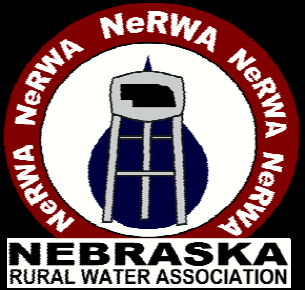Blackflow Prevention
June 28, 2019
BACKFLOW PREVENTION
AND
THE CUSTOMER
Helping Keep
Our Water
Safe !!

What you can do to prevent cross connections and keep your drinking water safe.
1.Check your faucets to be sure that all faucet endpoints are above the flood level of the sink, tub, basin, or other apparatus they supply.
2.Protect faucet extensions by installing proper backflow prevention devices (i.e. hose bib vacuum breakers) on all faucets capable of having a hose or other extension attached.
3.Check drain lines (refrigerator drink dispensers, water softeners, heat exchangers, etc.) to be sure there is an adequate air gap between the drain line and the floor drain or sewer line into which they discharge.
4.Never use unprotected faucets to fill non-drinking water containers (i.e. water beds, wading pools, stock tanks, hot tubs, etc.)
Following these guide lines and using common sense will help to eliminate the possibility of you contaminating your drinking water, your neighbor’s drinking water and your community’s drinking water. This not only affects the residents of your community, but their visitors and those people who are passing through.
Nebraska’s Safe Drinking Water Act requires water systems to implement an on-going cross connection control program. An important part of this program is public education. It is believed that a well informed public will be more aware of the possibility of cross connections within their property and will take reasonable and sensible precautions to avoid creating cross connections on their property. This brochure is intended to explain what a cross connection is, what causes it, what some of the consequences can be, and how it can be prevented.
What is a cross connection?
A cross connection occurs whenever there is an actual or potential physical connection between the public drinking water system and any possible source of contamination. Sources of contamination can include both high hazard materials, which can cause illness or death, and low or non-hazardous materials which are mainly just a nuisance and can cause the water to look, taste or smell unpleasant. Although the high hazards are the primary concern in a cross connection control program, your water utility strives to provide both safe and good quality water to its customers. Whenever there is a loss of pressure in the public water supply, these cross connections can allow unsafe substances to enter the public water supply.
What causes cross connections?
Cross connections can be caused by both permanent and temporary “piping”. An example of a cross connection being permanently piped in is the drain on a water softener. Many times these discharge lines are connected directly to the sewer line without any type of protection. Hot tub and whirlpool fill pipes and swimming pool and boiler make-up lines are other examples of permanently piped cross connections. The most common example of a temporary piped cross connection is the common garden hose. It is estimated that 90% of all cross connections are caused by the inappropriate use of garden hoses. Garden hoses are frequently used to apply fertilizer and pesticides to lawns and gardens. They are also used to fill swimming pools, wash cars, and in rural areas, they are often used to fill stock tanks for watering cattle, horses, and other livestock. Other temporary piping cross connections occur when hoses are used to fill waterbeds or are connected to utility sinks to fill wash tubs or mop buckets.
What are the consequences of cross connections?
The consequences of cross connections can range from something as simple as “dirty water” to something as severe as serious illness or even death. There are many recorded instances of non-hazardous contamination of public water supplies caused by cross connections. In one case, a line used for cleaning a distilling vat in a wine bottling company was left open, and an entire vat of wine flowed back into the public water system. Although this was not a health hazard, and most of the customers liked the water they drank, this cross connection could have had far deadlier results if it had been something other than wine in the vat. There are many instances recorded where people have been made seriously ill or even died due to cross connections. There have been cases where dysentery, diarrhea, hepatitis and even polio have been contracted as a direct result of a cross connection.
How can cross connections be prevented?
The best way to prevent cross connections is for each customer to examine the plumbing on their premises and look for any permanent or temporary piped cross connections. Any time there is the possibility of a cross connection between the water supply and any hazardous or unknown substance, there should be an air gap between the faucet and the questionable use.
In cases where this is not possible, as with a garden hose, a proper backflow prevention device or assembly should be installed on the supply faucet. This will protect both the public water supply and the inhabitants of the building from contamination.
In situations where extremely high hazards exist in a building or location, it is sometimes necessary to contain that entire system from the public water supply with a backflow preventer to protect the public water supply from the substances being used on that site.
For more information contact the Village Works Department.




